Lesson 1 | Cross-References
Cross-Reference Types (PORT)
You will find that there are a variety of cross-reference systems used across different study Bibles and apps. In this course, we will focus on the ESV cross-reference system, but the principles you will learn apply widely. You may also look for an introductory note about the cross-reference system used in your study Bible somewhere in its introductory pages. (For example, here are the official notes on the ESV Cross-Reference System used on Biblearc.)
To understand the types of cross-references, let’s learn the PORT acronym.

Besides providing an easy way to remember the different types, “port” should also remind you that while we are sending out to explore other parts of the Bible, we always want to return home to the core passage of our study.

Certain episodes in the Bible appear in multiple locations.
- Deuteronomy is the second giving of the law and so naturally has many passages which parallel the first giving of the law in Exodus and Leviticus
- I-II Samuel and I-II Kings recount the kings of Israel and Judah, as do the parallel books of I-II Chronicles
- Matthew, Mark, Luke, and John are all called the “Gospels” because they parallel one another in narrating the life, death, and resurrection of Jesus
Matthew 8
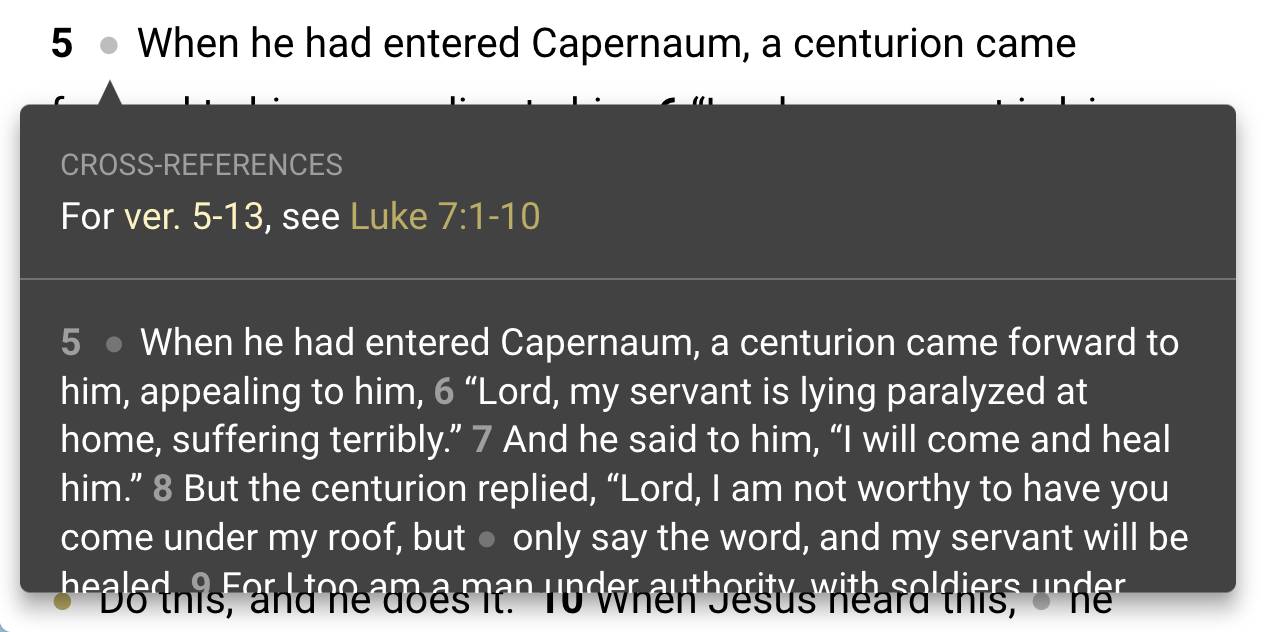
And there are still more parallels in other books which come in smaller portions. Being made aware of and finding these parallels is very important in Bible study.

The Bible was not originally written in English. This is the reason there are different translations. And this is also the reason that you may hear your pastor talk about the Greek or Hebrew word behind an English word in the text. The Old Testament was written in Hebrew (and a little bit of Aramaic), while the New Testament was written in Greek. Knowing this is of utmost importance to working with cross-references, understanding footnotes, comparing translations, and searching your Bible.
Given this reality, often times a cross-reference is based on an original language word or phrase connection. You can generally assume that an ESV cross-reference is rooted in the original Hebrew or Greek whenever it is presented without square brackets.
Romans 8
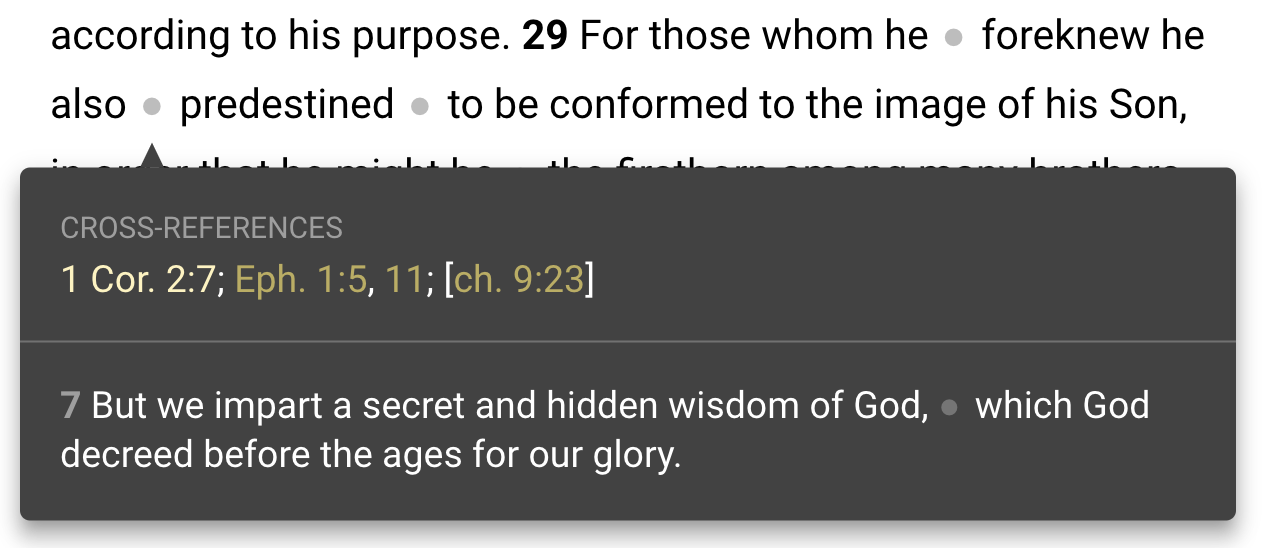
In this example, the word “predestined” does not appear in 1 Corinthians 2:7; but the same Greek word behind “predestined” in Romans 8:29 does! In 1 Corinthians, it is translated “decreed.” The two cross-references from Ephesians also use the same Greek word. That is, in fact, what caused them to make this list.
Romans 9:23 (labeled simply “ch. 9:23” above since the core passage of study is already Romans), on the other hand, presents a verse with a similar idea, but not using the same Greek word. For this reason, we find it in square brackets and classify it as a theme-type cross-reference (see below).
What does all this matter? It matters a lot. A theme-type cross-reference is akin to a friend suggesting you check out another passage in your study of Romans 8:29. But with an original language-type cross-reference, we might say that the suggestion is coming from the authors of Scripture themselves!
So, while this might be difficult to understand, it is the most powerful type of cross-references. You may not know anything about Hebrew or Greek, but cross-references allow you to discover original language connections nonetheless.

You cannot study a passage in much depth without familiarizing yourself with the other places in the Bible that it refers to or hints at. (When it hints at something earlier in Scripture, this is called an “allusion.”) This may be an incident, person, or prophecy being fulfilled. Cross-references help us in this regard.
James 5
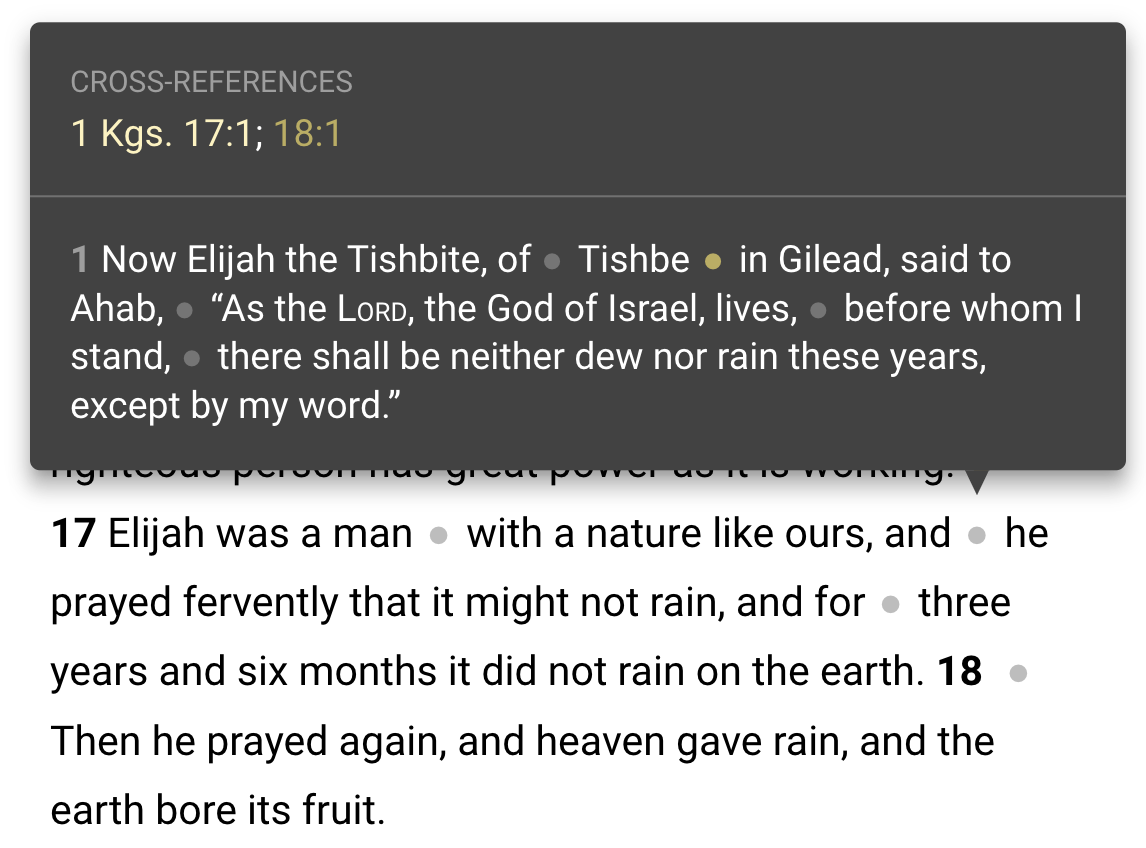
Other times, the Bible explicitly quotes itself. This is called a “citation” and likewise fits under the refers-back type of cross-reference.
Hebrews 1
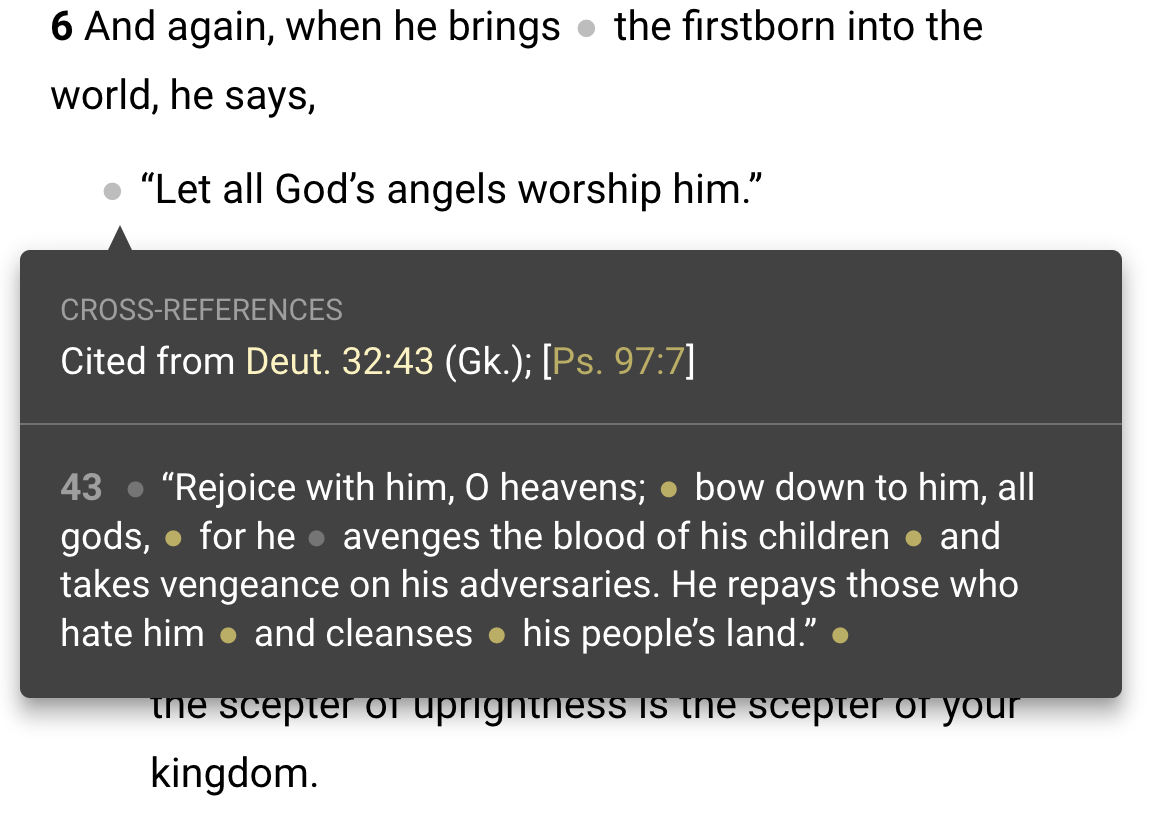
You will find the words “Cited from” preceding references to citations as you do here. Only on occasion, however, will you find “(Gk.)” or “(Heb.)” following a reference. In such instances, the reason for the cross-reference will not be apparent in the English translation. For example, how is Hebrews 1:6 quoting Deuteronomy 32:43 since nothing like “Let all God’s angels worship him” appears in that verse? The answer is that it does appear in the Greek translation of Deuteronomy 32:43. (More on this sort of thing in a later lesson.)

Theme connections are sometimes presented in a cross-reference for you to explore where else an idea is developed. This is much more a subjective type of cross-reference, included merely at editorial discretion. Such cross-references can be helpful in discovering additional layers of truth within the text in front of me. They also can serve as a safeguard from misunderstanding or poorly drawn inferences.
Romans 8
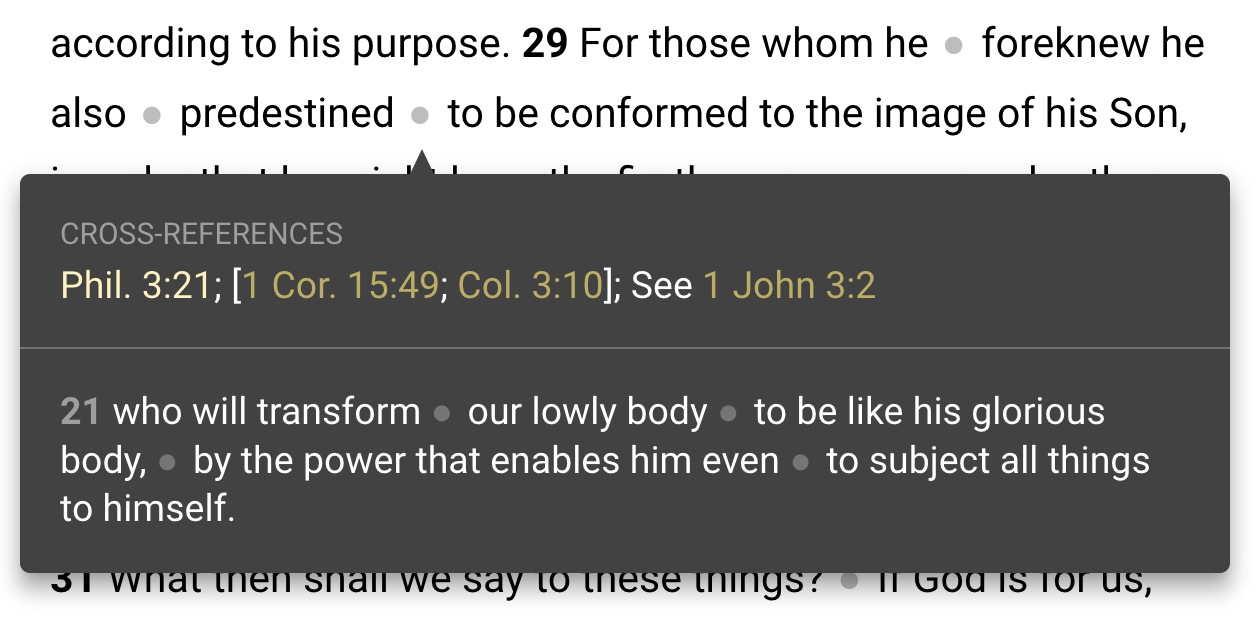
The idea of being conformed to the image of Jesus is further developed in Philippians 3:21, and more loosely in 1 Corinthians 15:49 and Colossians 3:10. Still other cross-references on this theme can be found in 1 John 3:2 under a cross-reference dot presented there (that is what “See…” indicates in the ESV cross-reference system).
Finally, remember that cross-references are not designed to study Scripture for topics. This includes those of the theme type. Rather, cross-references are anchored in a particular passage of port, from which we send out expeditions and then return.
